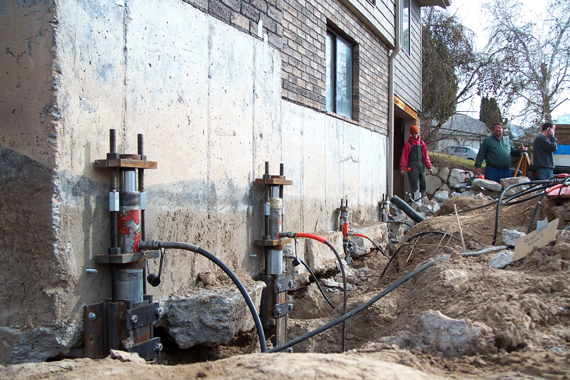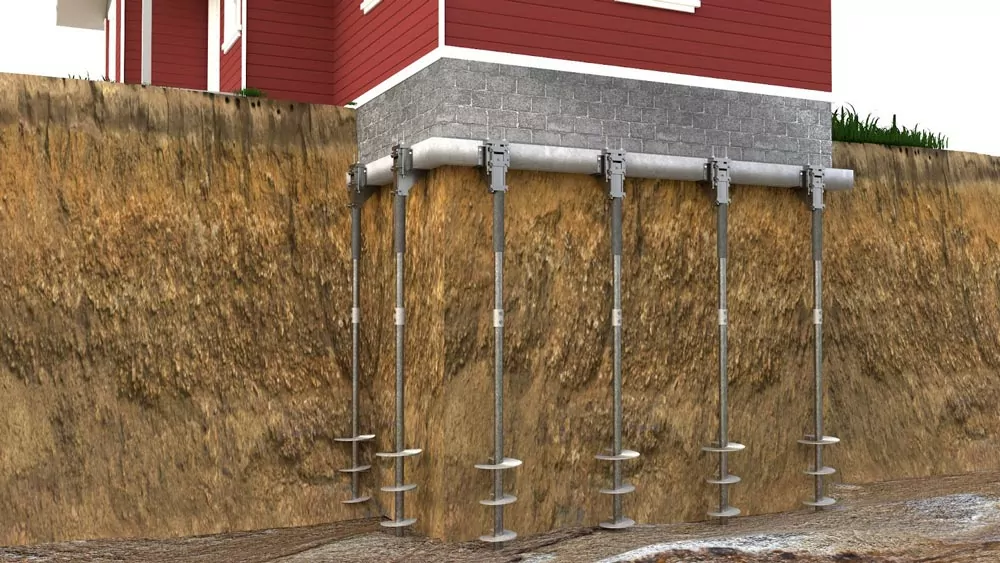Leading Reasons to Select Foundation Repair OKC for Your Home's Security
Leading Reasons to Select Foundation Repair OKC for Your Home's Security
Blog Article
Discovering Various Approaches of Foundation Repair Work for Numerous Soil Kinds
Foundation fixing is a crucial facet of preserving architectural stability, specifically when thinking about the varied difficulties postured by different dirt types. The intricacy of soil habits under differing conditions necessitates a tailored technique to fix, ensuring optimum services such as helical piers for unpredictable soils or chemical cements for cohesive layers. The question stays: just how do we determine the most efficient approach for each unique situation? Comprehending the interaction between soil features and repair techniques is vital, yet there is even more to uncover in the quest for sustainable remedies. What elements genuinely determine the selection of method?
Recognizing Dirt Types
Dirt kinds play a critical role in the stability and durability of building structures, making it crucial for homeowners and construction specialists to recognize their qualities and behavior. The communication between soil and foundation can establish the architectural stability of a building. There are a number of soil kinds, each with distinctive physical buildings that influence exactly how structures are created and maintained.
Granular soils, such as sand and crushed rock, give great drainage and are frequently considered secure. They have high load-bearing abilities, which can sustain heavier structures. However, these soils can change if not compacted appropriately, causing possible settlement issues. On the other hand, cohesive dirts like clays and silts exhibit various habits. These dirts have a tendency to preserve wetness, and their load-bearing ability can differ dramatically with modifications in dampness web content.
Rocky dirts, understood for their toughness and security, deal exceptional assistance for foundations but might call for specialized devices for excavation. On the other hand, fertile dirts, which are a balanced blend of clay, sand, and silt, usually give favorable problems for structure support because of their moderate drain residential properties.

Comprehending these dirt kinds is essential for selecting appropriate structure repair work techniques, guaranteeing the sturdiness and safety of frameworks with time.
Challenges With Large Clay
Amongst the numerous dirt kinds, extensive clay provides distinct challenges for foundation stability as a result of its tendency to go through considerable volume changes with moisture variant. This kind of dirt swells when wet and contracts when dry, which can put in considerable stress on frameworks. These changes can bring about foundation cracking, heaving, and negotiation problems, positioning substantial dangers to the architectural honesty of structures.
The challenges with extensive clay are worsened by its plasticity index, which gauges the dirt's capacity to change form and volume. A high plasticity index indicates greater potential for activity, boosting the possibility of damage to structures. This is specifically problematic in areas experiencing constant or severe weather condition modifications, where cycles of damp and completely dry conditions prevail.
Additionally, the depth of large clay layers can differ, making complex the evaluation and preparation of ideal structure fixing techniques. The unpredictable nature of its activity requires specialized engineering options to reduce threats. Additionally, large clay can affect utility driveways, pathways, and lines, additionally complicating fixing efforts. These complexities require an extensive geotechnical evaluation to make sure effective structure repair methods are applied, highlighting the relevance of dealing with expansive clay challenges with expertise and care.
Solutions for Sandy Soils
Sandy soils, identified by their big bit dimension and low communication, present unique difficulties for foundation security due to their propensity for shifting and erosion. These buildings necessitate specialized structure repair service techniques to ensure architectural integrity. One reliable service is making use of deep structure systems such as helical piers or driven stacks. By securing the foundation to deeper, more stable dirt layers, these systems can give the necessary support to neutralize the changing nature of sandy soils.
An additional advised technique is the application of soil stabilization techniques. Chemical grouting, for example, includes infusing a supporting representative right into the dirt, which improves communication and minimizes leaks in the structure. This procedure assists to solidify the sandy substrate, therefore minimizing the danger of erosion and activity.
Additionally, installing proper drainage systems is essential in sandy dirt problems. Guaranteeing appropriate drain can protect against water build-up around the structure, which frequently aggravates erosion and soil variation. Techniques such as French drains or surface area grading can be utilized to route water away from the structure perimeter.
Resolving Resolving in Loamy Soils
Loamy dirts, known for their balanced mix of silt, clay, and sand, provide a productive base for many structures however can in some cases bring about foundation settling as a result of their one-of-a-kind structure. This balanced structure gives exceptional drainage and nutrient retention, making it optimal for agriculture and landscape design. This exact same quality can end up being bothersome for structures, as changes in dampness content can create the soil to broaden or contract, leading to settling.
Exact soil screening is crucial to establish the details structure and dampness content of the loam. Once data is collected, applying correct drainage remedies is essential to preserve regular moisture degrees, therefore reducing the risk of soil contraction or growth.

Cutting-edge Repair Service Methods
In the world of foundation repair, ingenious methods are continually being established to address the complex challenges posed continue reading this by numerous soil problems. As dirt kinds differ considerably in their architectural homes, typical methods may not always are adequate. The arrival of new innovations in structure repair provides much more customized remedies, ensuring security and durability.
One noteworthy development is the usage of helical piers, which are especially effective in large or unstable soils (foundation repair Oklahoma). These piers are screwed into the ground till they get to a stable layer of soil, offering strong assistance for the foundation above. This technique decreases disturbance and is versatile to various soil types, making it a flexible option
One more cutting-edge technique is the application of polyurethane foam shot. This approach involves injecting high-density polyurethane foam underneath the structure to load voids and support the structure. It is a much less intrusive option to standard foundation, using quick setup with very little disturbance to the surrounding location.
Additionally, soil stablizing techniques, such as the usage of chemical grouts, have obtained traction. These compounds boost dirt toughness and minimize leaks in the structure, protecting against future shifting. Collectively, these ingenious fixing strategies give effective options for the diverse challenges positioned by differing dirt conditions.
Final Thought

Structure repair work is a critical element of preserving architectural honesty, especially when considering the diverse difficulties posed by various soil kinds (foundation repair okc ok). The complexity of soil habits under varying problems demands Our site a customized technique to fix, guaranteeing optimum solutions such as helical piers for unpredictable soils or chemical grouts for cohesive layers. By securing the structure to deeper, extra steady dirt layers, these systems can supply the required assistance to counteract the moving nature of sandy soils
Structure repair work requires mindful consideration of soil kinds to make sure stability and long life. Chemical grouts improve dirt toughness and minimize permeability in natural dirts.
Report this page